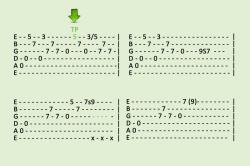What is the purpose of the diss system?
The term "diss" is short for "disrespect" or "disparagement." The purpose of the "diss system" or "diss culture" is to engage in a form of artistic expression, primarily within the context of hip-hop and rap music. It involves creating and delivering lyrics that insult or criticize another person or entity, often in a clever, humorous, or skillful manner. The diss system serves several purposes:
Artistic Expression: Diss tracks are a form of artistic expression within the realm of hip-hop. Rappers use wordplay, metaphor, and creative language to convey their thoughts and emotions. It's a way for artists to showcase their lyrical and poetic skills.
Competition: The diss culture is often competitive, with one rapper trying to outdo another in terms of wit, wordplay, and lyrical skill. It can be a way for artists to prove their prowess in the genre and assert their dominance.
Venting and Catharsis: Rappers may use diss tracks to express frustration, anger, or to address personal issues. It provides an outlet for them to vent and confront perceived adversaries.
Entertainment and Engagement: Diss tracks can be entertaining for listeners. They generate interest and engagement in the music industry and among fans, creating excitement and anticipation for rap battles and responses.
Storytelling: In some cases, diss tracks are used to tell a story or narrate a feud or conflict between artists. This storytelling aspect can draw in listeners and add depth to the narrative.
Promotion and Publicity: Diss tracks can also serve as a marketing tool. Feuds and controversies generate media attention, which can help promote the artists involved and boost their popularity.
It's important to note that while diss tracks may contain insults and provocations, they are often part of a larger culture of competition and expression within the hip-hop and rap communities. In many cases, the artists involved in diss tracks may later reconcile or move on from the conflicts. However, there are instances where diss tracks have escalated into real-world disputes and controversies, so the boundary between artistic expression and real-life conflict can be blurry.
The term "DISS" doesn't seem to refer to a specific information management system. However, if you're referring to a general information management system, here's a comprehensive overview of the points you provided:
1. Understanding the Purpose of an Information Management System
An information management system (IMS) is a software application or platform designed to collect, organize, store, and retrieve information efficiently. It serves as a central repository for data, enabling users to access, manage, and utilize information effectively. IMSs play a crucial role in various organizations, businesses, and government agencies, supporting decision-making, streamlining processes, and ensuring data integrity.
2. Features and Benefits of an Information Management System
IMSs offer a range of features and benefits, including:
Centralized Data Storage: IMSs provide a centralized location for storing and managing data, eliminating silos and ensuring data consistency.
Data Organization and Retrieval: IMSs enable efficient organization of data using categories, tags, and metadata, facilitating quick retrieval and search capabilities.
Access Control and Security: IMSs implement access control mechanisms to protect sensitive data and ensure authorized access based on user roles and permissions.
Version Control and Audit Trails: IMSs maintain version histories and audit trails to track changes, identify errors, and ensure data integrity.
Integration and Collaboration: IMSs often integrate with other systems and applications, enabling seamless data exchange and collaboration across departments or organizations.
3. How an IMS Enhances Data Organization and Retrieval
IMSs enhance data organization and retrieval through:
Data Classification: Categorizing data based on type, relevance, and purpose, enabling efficient organization and retrieval.
Metadata and Tagging: Adding descriptive metadata and tags to data, allowing users to search and filter information based on specific criteria.
Search Functionality: Providing advanced search capabilities to locate specific data quickly and accurately.
Data Visualization: Presenting data in visually appealing and informative formats, such as charts, graphs, and dashboards, for better comprehension and analysis.
4. Applications of an IMS in Various Fields
IMSs find applications in various fields, including:
Business Management: Managing customer data, sales records, inventory information, and financial data for informed decision-making.
Healthcare: Storing patient records, medical histories, and treatment plans, enabling efficient access and sharing among healthcare providers.
Education: Managing student records, academic performance data, and course materials for effective administration and personalized learning.
Government: Maintaining citizen records, tax information, and regulatory compliance data for efficient governance and public service delivery.
5. Tips for Effective Use of an IMS
Effectively utilizing an IMS involves:
Clear Objectives: Define clear objectives for using the IMS, aligning with organizational goals and data management needs.
Data Quality: Ensure data accuracy, completeness, and consistency to maintain data integrity and reliability.
User Training: Provide adequate training to users on data entry, retrieval, and security protocols to ensure proper usage.
Regular Maintenance: Perform regular maintenance, updates, and backups to ensure system stability and data protection.
Continuous Evaluation: Regularly evaluate the IMS's effectiveness, identify areas for improvement, and adapt to changing data management needs.













